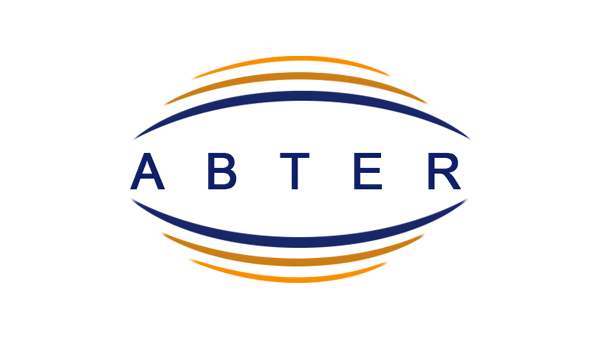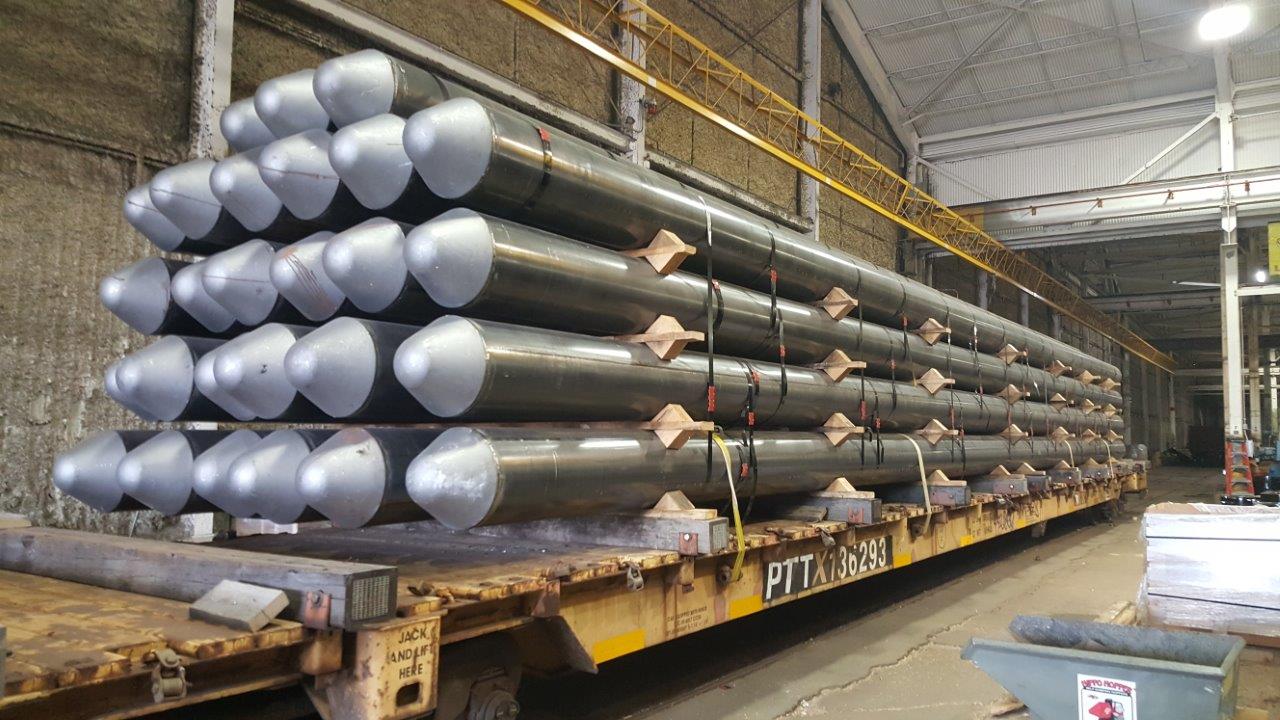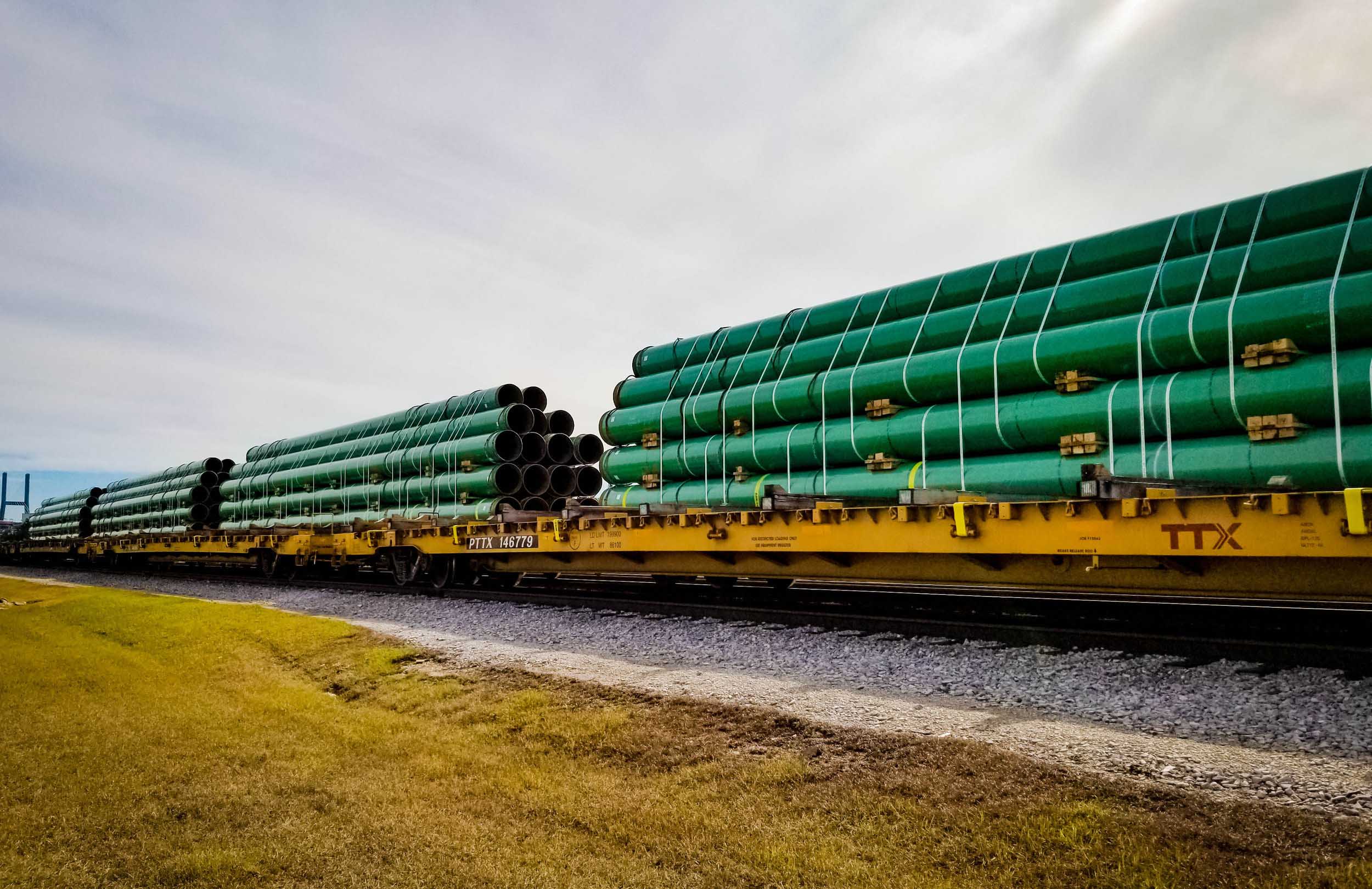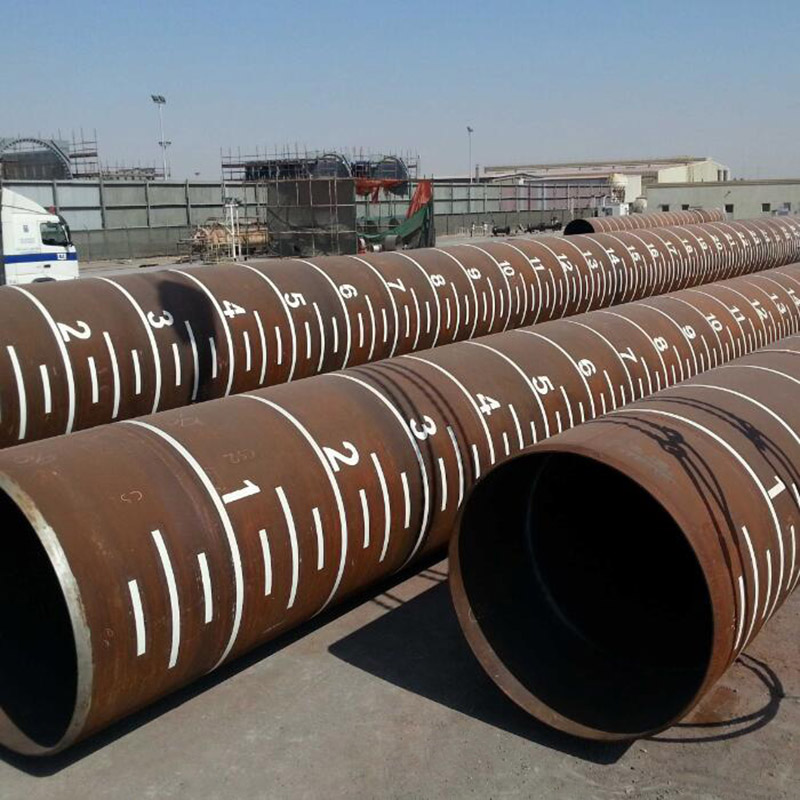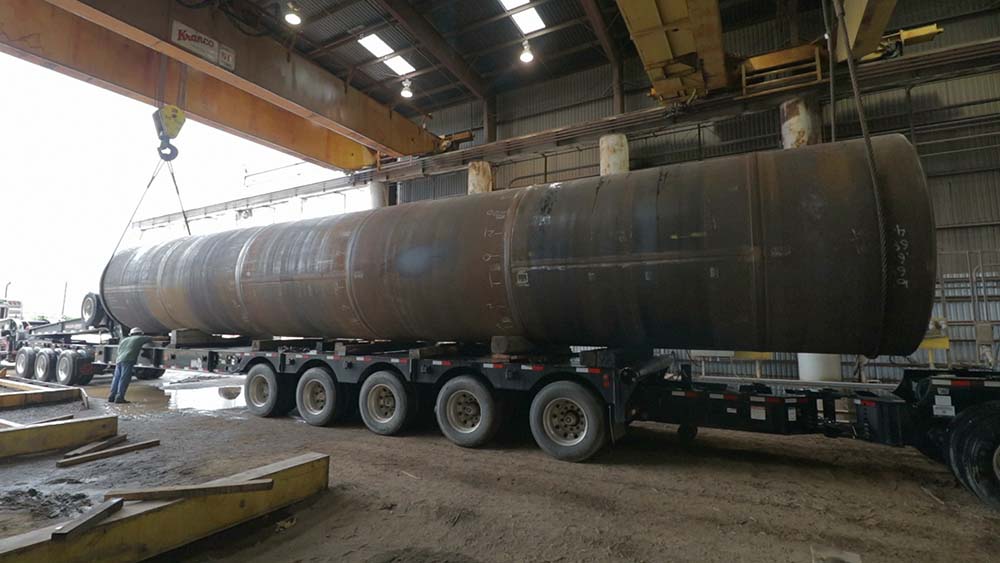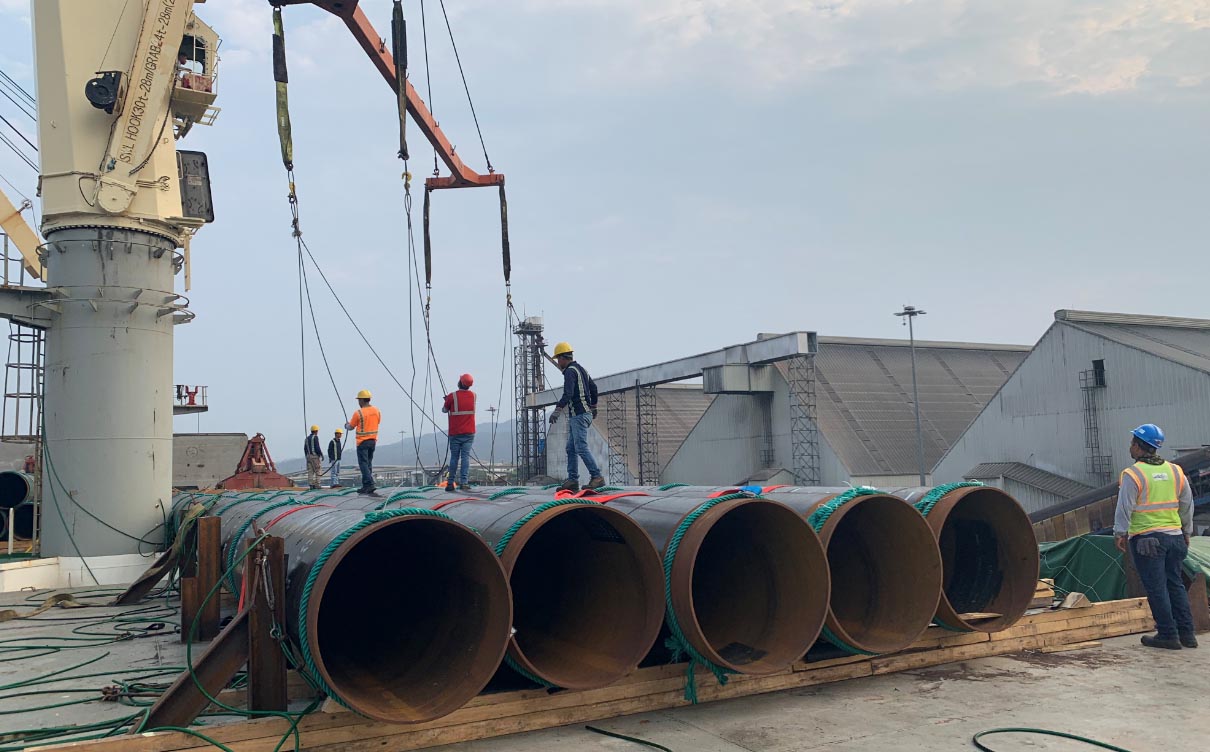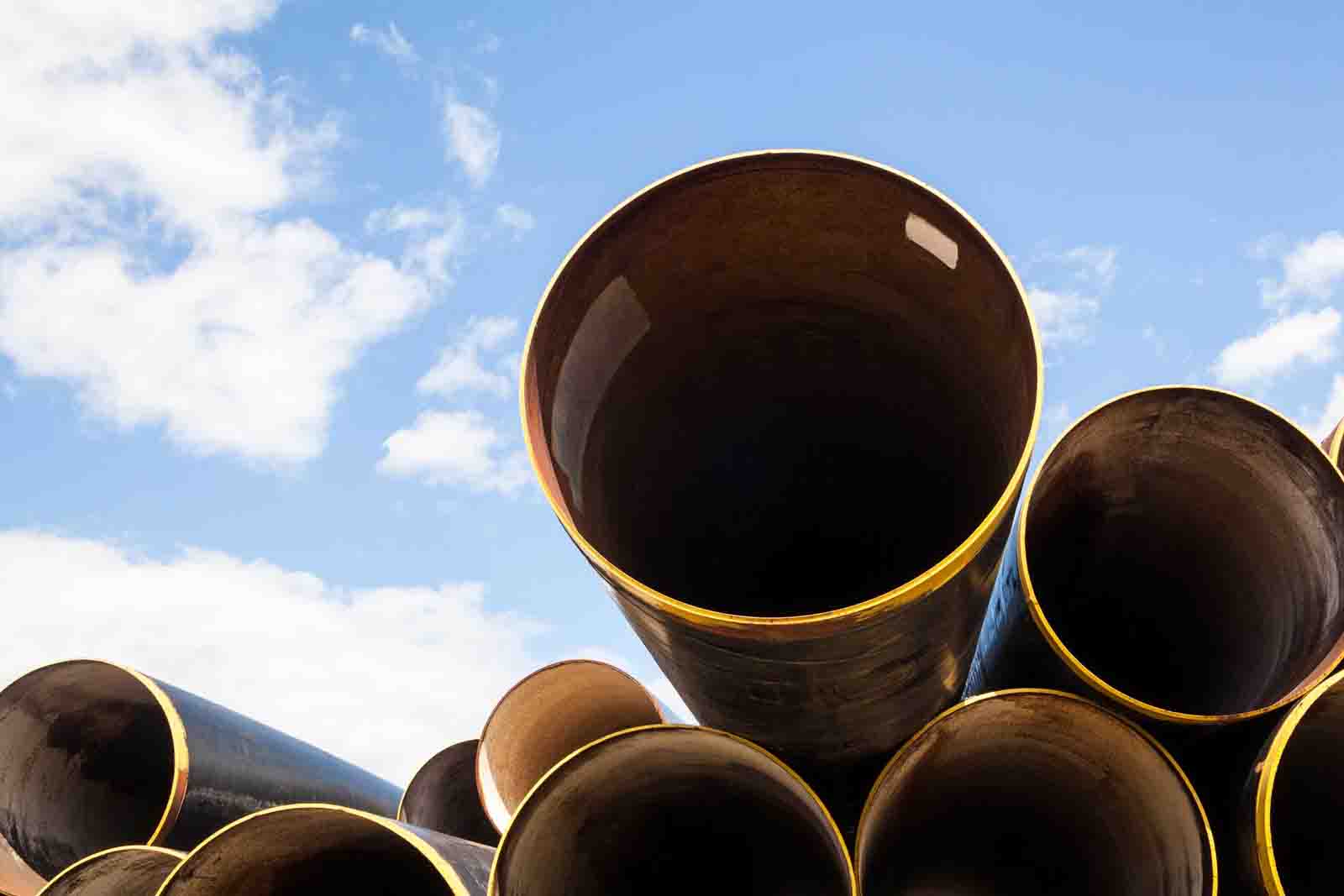Engineering Resilience: The Definitive Guide to ASTM A252 Steel Pipe Piles
Forging the Future: Uncompromising Quality and Performance in Deep Foundation Manufacturing
1. Introduction: The Unseen Strength Beneath Global Infrastructure
In the high-stakes realm of civil and structural engineering, the foundation is not merely the base of a structure; it is the absolute guarantor of its stability, longevity, and safety. When project demands escalate—facing massive structural loads, challenging subterranean conditions, or corrosive marine environments—the choice of foundation element becomes non-negotiable. This is where the **ASTM A252 Steel Pipe Pile** assumes its indispensable role. As a foundation solution, steel pipe piles offer a unique combination of high tensile strength, excellent resistance to driving stresses, and the adaptability to be filled with concrete, transforming them into high-capacity composite structural members capable of enduring the most punishing design loads.
Our commitment, as a dedicated manufacturer of these essential components, transcends simple compliance. We view the ASTM A252 specification not as a set of limits, but as the foundational benchmark for quality assurance. This internationally recognized standard governs the requirements for seamless, electric-resistance-welded (ERW), and fusion-welded steel pipe piles, ensuring mechanical consistency and dimensional predictability for deep foundation applications. The rigorous requirements of A252 are vital because foundation piles are subjected to brutal forces both during installation—driven by immense energy through varying strata—and throughout their service life, bearing the full weight and dynamic forces of the superstructure. Any compromise on material quality or dimensional tolerance can lead to catastrophic failure, a risk that we meticulously eliminate through superior manufacturing protocols.
This extensive technical discourse is designed to serve as a comprehensive reference for engineers, procurement specialists, and construction managers. We will meticulously unpack the specific requirements of the ASTM A252 standard, detailing the critical **Mechanical Properties** and the essential considerations for **Chemical Composition**. Furthermore, we will illuminate the advanced manufacturing technologies we employ—the precise welding techniques, the rigorous quality control methodologies including Non-Destructive Testing (NDT), and the logistics of delivering a product that is perfectly customized for critical infrastructure projects, ranging from deep-sea oil platforms and massive suspension bridges to urban high-rise developments. Choosing the right steel pipe pile, particularly one compliant with the high-performance **Grade 2 or Grade 3** standards, is the single most critical decision in securing a robust and enduring structural future.
2. Deciphering ASTM A252: Mechanical Properties and Material Chemistry
The core value of the ASTM A252 specification lies in its definition of the minimum acceptable mechanical performance for piling steel. Unlike some structural standards that heavily focus on chemistry, A252 is primarily a **performance specification**, ensuring that the pipe can withstand the rigors of pile driving and subsequent structural loading. This performance is quantified by three distinct grades, each offering increasing load-bearing capabilities. Understanding these grades and their accompanying mechanical metrics is paramount for foundation design.
2.1. Critical Mechanical Properties and Grades
The standard mandates minimum values for both **Yield Strength** and **Tensile Strength**. Yield strength is perhaps the most critical metric for piling, as it defines the stress limit beyond which the pile material will undergo permanent plastic deformation. A high yield strength is essential to resist buckling and permanent set during the massive impact forces applied by driving hammers. Tensile strength, while also important, dictates the pile’s ultimate capacity and resistance to fracture. ASTM A252 defines the following minimum requirements:
| Table 1: ASTM A252 Mechanical Property Requirements (Minimum) | |||
|---|---|---|---|
| ASTM A252 Grade | Minimum Yield Strength (psi) | Minimum Yield Strength (MPa) | Minimum Tensile Strength (psi) |
| Grade 1 | 30,000 | 205 | 48,000 |
| Grade 2 | 35,000 | 240 | 50,000 |
| Grade 3 | 45,000 | 310 | 60,000 |
Our focus is heavily concentrated on manufacturing and supplying **Grade 2 and Grade 3** pipe piles. Grade 2 offers an excellent blend of strength and ductility for standard piling applications, while Grade 3, with its significantly higher yield strength of 45,000 psi (310 MPa), is the choice for extremely high design loads, severe driving resistance (hard ground, rock), and situations where minimizing pile size for a given load is critical. The requirement for a minimum percentage of elongation (not shown in the simplified table but integral to the standard) ensures the steel possesses adequate **ductility**—the ability to deform without fracturing—which is vital for withstanding seismic events and the intense, localized stresses during hammer strikes.
2.2. Chemical Composition and Weldability
Unlike mechanical properties, ASTM A252 does not specify mandatory chemical limits for Grade 1, 2, or 3. It places the responsibility on the manufacturer to ensure the chemical composition is suitable for the required mechanical properties and, crucially, for the intended welding process. However, to guarantee optimal weldability—essential for both in-mill production (ERW, SAW) and critical field splicing—we maintain strict internal controls on key alloying elements. Controlling the levels of carbon, manganese, phosphorus, and sulfur is fundamental to preventing hydrogen-induced cracking and maintaining the toughness of the heat-affected zone (HAZ).
| Table 2: Typical Chemical Composition Controls (Maximum % by Weight, Heat Analysis) | |||||
|---|---|---|---|---|---|
| Element | Carbon (C) | Manganese (Mn) | Phosphorus (P) | Sulfur (S) | Silicon (Si) |
| Typical Maximum Limit | 0.30% | 1.20% | 0.040% | 0.050% | 0.40% |
The values presented in Table 2 reflect the typical maximum limits we adhere to for steel that will be readily weldable while achieving the mechanical properties of Grade 2 and 3. By tightly controlling the **Carbon Equivalent (CE)**, we guarantee that the material will maintain its structural integrity and ductility through the high temperatures of the welding process, providing our clients with peace of mind regarding the safety and ease of critical field joints.
2.3. Dimensional Tolerances: The -12.5% Rule
In addition to strength, A252 sets strict requirements for dimensional accuracy. The most critical tolerance relates to **wall thickness (WT)**. The standard stipulates that the wall thickness at any point should not be more than **12.5% less** than the specified nominal wall thickness. This negative tolerance is vital because wall thickness directly dictates the cross-sectional area of the pipe, which in turn determines the pile’s buckling capacity, structural stiffness, and effective corrosion allowance. Our manufacturing processes are calibrated to minimize this variance, often operating with a much tighter internal tolerance to ensure that the delivered pipe consistently offers a greater factor of safety and full confidence in the pile design calculations. Other tolerances, such as those for outside diameter (OD) and straightness, are equally crucial, ensuring correct fit-up for driving shoes and seamless alignment for field splicing.
3. Manufacturing Prowess: Advanced Welding and Precision Forming
The journey of raw steel into a certified **ASTM A252** pipe pile is a complex, technologically intensive process that demands absolute precision at every stage. We utilize industry-leading forming and welding techniques, tailored specifically for the rigorous demands of deep foundation applications. The two primary methods we employ for large diameter piling are Spiral Submerged Arc Welding (SSAW) and Double Submerged Arc Welding (DSAW), each offering distinct advantages.
3.1. The Submerged Arc Welding (SAW) Advantage
The strength of our pipe piles hinges on the quality of the weld seam, which must maintain or exceed the strength of the parent steel plate. Submerged Arc Welding (SAW) is the preferred method for high-integrity structural applications. The process involves laying down an arc beneath a blanket of granular flux, which shields the weld pool from atmospheric contaminants (oxygen and nitrogen), ensuring a clean, high-quality, and deep-penetrating weld. This deep penetration is critical for full structural utilization of the pipe wall thickness, ensuring the integrity of the pile against high axial loads.
For high-volume, continuous production, the **Spiral Submerged Arc Welding (SSAW)** process is often utilized. In this method, steel coil is continuously fed and spirally formed into a pipe shape, with the weld running helically along the body. This efficiency allows for the creation of extremely large diameters and variable wall thicknesses from standard coil widths, offering unmatched design flexibility. For maximum structural assurance, especially in critical foundation piles, we also extensively employ **Double Submerged Arc Welding (DSAW)**, where the pipe is formed and then welded both internally and externally. This dual-sided approach guarantees complete fusion and superior mechanical integrity throughout the entire wall thickness.
3.2. Formability, Heat Treatment, and Metallurgy
The forming process—whether spiral rolling or the sequential U-O-E method for straight seam pipes—is carefully controlled to minimize residual stresses in the final product. Furthermore, the welding process inherently involves localized heat treatment. The heat-affected zone (HAZ) adjacent to the weld must be metallurgically sound, maintaining the toughness and mechanical properties defined by the A252 grade. We strictly manage the heat input and cooling rates to fine-tune the microstructure of the weld metal and the HAZ, ensuring ductility is not compromised—a factor vital for the pile to absorb the dynamic energy of pile driving without brittle fracture or premature fatigue. This meticulous attention to metallurgy ensures that the final product not only meets the Grade 2 or Grade 3 yield strength but also possesses the necessary robustness for real-world installation and service life.
Every step, from the precise shearing of the steel plate to the final sizing and straightening of the finished pipe, is monitored. Our state-of-the-art machinery applies specific forming pressures and geometric controls to ensure the final product adheres rigidly to the outside diameter, straightness, and circularity tolerances required for seamless integration into large-scale construction projects.
4. Uncompromising Quality Assurance: NDT and Full Traceability
The certification of an **ASTM A252** pipe pile is fundamentally dependent upon an unyielding Quality Assurance/Quality Control (QA/QC) program. This is where the paper trail meets the physical product. Our comprehensive QC system is designed to provide full, auditable traceability from the steel mill heat number to the final stencil mark on the finished pile, ensuring every component installed deep underground is validated by verifiable data.
4.1. Rigorous Non-Destructive Testing (NDT)
For welded pipe piles, the integrity of the weld seam is verified using advanced NDT methods. This proactive testing minimizes the risk of structural defects that could lead to weld failure under the high-impact forces of pile driving or static structural loads:
- Ultrasonic Testing (UT): UT is performed along 100% of the weld seam. This technique uses high-frequency sound waves to scan the pipe wall, detecting internal flaws such as lack of fusion, inclusions, or porosity. Our automated UT systems provide continuous, real-time feedback during the welding process, allowing for immediate adjustments and ensuring maximum weld quality and structural efficiency.
- Radiographic Testing (RT): For critical applications or per specific client requirements, Radiographic Testing (X-ray or Gamma ray) is employed on selected areas. RT provides a permanent visual record of the weld’s internal structure, confirming the absence of subsurface discontinuities and validating the UT results.
- Magnetic Particle Testing (MPT) or Liquid Penetrant Testing (LPT): These surface inspection methods are used on the weld crown to detect any microscopic surface-breaking flaws, such as micro-cracks or pinholes, ensuring a perfectly sound weld surface finish.
The strict adherence to these NDT protocols not only meets the A252 standard but also provides an assurance that the pile’s structural capacity is fully realized, preventing costly on-site installation failures due to compromised material integrity.
4.2. Mill Test Certificates (MTCs) and Data Integrity
Every shipment is accompanied by detailed **Mill Test Certificates (MTCs)**, sometimes referred to as Certified Material Test Reports (CMTRs). These documents are the ultimate proof of compliance, containing: the heat number of the raw material, the results of the chemical analysis, the mechanical test results (confirming minimum yield/tensile strength for the specified grade), and confirmation of compliance with dimensional and NDT requirements. Our system ensures that the information stamped or stenciled on the pipe (including manufacturer, heat, lot number, and A252 grade) directly links to the corresponding MTC, maintaining an unbroken chain of custody and quality assurance that is essential for regulatory approval and peace of mind for project owners.
4.3. Hydrostatic Testing Considerations
While the A252 standard allows for the hydrostatic test to be waived for pipe intended for piling (as piles typically do not carry internal pressure), we maintain the capability for this test. For specialized projects where the pipe might function as a structural shell or a conductor, or where enhanced integrity verification is required, hydrostatic testing subjects the pipe to internal pressure, detecting leaks and verifying the material’s circumferential strength, adding another layer of quality assurance when specified by the engineer of record.
5. Versatility and Application: Securing Critical Infrastructure
The inherent strength, adaptability in size (diameters ranging from 8 inches to over 10 feet), and the ability to be driven deep into complex geology make **ASTM A252** pipe piles the most versatile deep foundation solution available. Their applications span the entire spectrum of heavy civil and industrial construction, often serving as the primary load-bearing element in the world’s most challenging environments.
5.1. Marine and Offshore Engineering
In marine environments, A252 piles face the triple threat of massive structural loads, relentless dynamic wave and current forces, and extreme corrosion. Large-diameter, thick-walled Grade 3 piles are the standard for:
- Offshore Wind and Oil & Gas Platforms: Used as high-capacity monopiles, foundation jackets, or anchor piles, transferring immense overturning moments and axial loads deep into the seabed.
- Ports and Wharves: Serving as the primary support for docks, piers, and jetties, resisting lateral impact from vessel berthing and providing stable support for heavy cargo handling equipment.
- Coastal Protection: Integrated into sheet pile walls and breakwaters, their high section modulus provides the necessary stiffness to retain large volumes of earth and resist hydrostatic pressures.
In these applications, the seamless integration of our corrosion protection services, including specialized coatings and cathodic protection fittings, is crucial to ensuring the A252 steel provides its designated structural performance over the full design life, often exceeding a century.
5.2. Heavy Civil and Transportation Infrastructure
For terrestrial construction, the pile’s ability to be driven to immense depths and bear massive compressive loads is paramount:
- Bridge Piers and Abutments: The foundation for nearly all major river crossings and elevated highways relies on A252 piles to penetrate soft overburden and socket into bedrock, providing a stable, predictable load path. The high tensile strength is also crucial for resisting lateral forces (wind, seismic) and uplift (tension) loads.
- High-Rise Construction: In metropolitan areas where geotechnical constraints are common, steel pipe piles minimize vibration during installation compared to some displacement methods and provide a robust solution for transferring the concentrated loads of towering structures through inconsistent urban fill and soil layers.
- Seismic Zones: The inherent ductility of A252 steel allows the pile-soil system to absorb significant seismic energy without brittle failure, making it a critical component in foundation designs engineered to meet stringent seismic codes.
5.3. Composite Action: The Filled Pipe Pile
One of the pipe pile’s greatest strengths is its ability to be filled with concrete, creating a **composite pile**. This design significantly increases the pile’s compressive load capacity, utilizing both the steel casing and the concrete core. The steel shell provides the necessary stiffness and strength during driving and acts as permanent formwork, while the concrete core takes on the final compressive load. Our manufacturing precision, particularly in maintaining strict internal dimensions, ensures that the cross-sectional area for concrete filling is optimized, guaranteeing the maximum efficiency of the composite design envisioned by the structural engineer.
6. Installation Dynamics: Managing Driving Stresses and Field Splicing
The actual installation of an **ASTM A252** pipe pile is a dynamic engineering challenge that tests the material to its limits. The higher yield strength of our **Grade 3** pipe is frequently specified precisely for its ability to overcome high driving resistance, minimizing the risk of buckling, kinking, or toe collapse during severe impact driving.
6.1. Driving Shoes and Closed/Open Ends
The successful advancement of a pile is often determined by the design of its toe. We provide custom-fabricated **driving shoes** for closed-end piles, which are essential when driving through cobbles, boulders, or very hard strata. These conical or flat shoes, often made from high-strength cast steel, distribute the impact energy and prevent the pipe end from deforming. For open-end piles—used to penetrate rock or to allow for soil removal (mucking)—the pipe end is typically reinforced with a heavier wall section or a cutting shoe to maintain the pipe’s integrity as it cuts through the ground, facilitating easier mucking and cleaning before concrete filling.
6.2. Field Splicing and Continuity
Because foundation depths often exceed the maximum economical shipping length, field splicing is a routine necessity. The inherent **weldability** of our A252-compliant steel, ensured by our controlled chemical composition, facilitates high-quality field welding. We can supply pipes with precise, pre-machined bevels (typically 30 to 37.5 degrees) ready for full-penetration butt welding on site. A properly executed full-penetration splice, which fuses the entire wall thickness, ensures that the structural capacity of the pile is maintained seamlessly across the joint, critical for both axial and bending capacity.
We also offer and recommend specialized mechanical splice systems for scenarios where welding is difficult or restricted (e.g., due to weather or time constraints). These mechanical connectors are designed to transfer the full compressive, tensile, and shear loads, providing an alternative that maintains the integrity and load-bearing capacity required by the structural design, all while ensuring compliance with A252’s inherent structural continuity requirements.
6.3. Dealing with Pile Refusal and Set
Pile driving success is measured by the “set”—the final penetration per hammer blow—which correlates to the ultimate bearing capacity. When hard driving or pile refusal is encountered, the pile material must possess the reserve strength to withstand continued impacts without structural damage. This is the ultimate test of the Grade 2 or Grade 3 yield strength. Our technical team works with contractors to perform wave equation analysis (WEAP) studies when requested, assisting in hammer selection and driving criteria, ensuring that the installation forces do not exceed the pipe’s capacity while maximizing driving efficiency, thereby protecting the investment in the high-quality A252 material.
7. The Total Value Proposition: Commercial and Environmental Superiority
The decision to utilize our **ASTM A252** pipe piles is an investment in both structural integrity and overall project efficiency. The total value proposition extends far beyond the material cost, encompassing logistics, installation speed, long-term durability, and environmental stewardship.
7.1. Economic Efficiency and Project Timeline
The predictability of a manufactured steel product significantly de-risks the foundation phase of any project. Steel piles can be manufactured to precise lengths in advance, eliminating the variable curing times associated with cast-in-place options. The speed of pile driving, particularly for steel, dramatically shortens construction schedules, leading to earlier project completion, reduced overhead, and quicker return on investment. Furthermore, the high strength-to-weight ratio of A252 steel allows engineers to design smaller, yet equally strong, foundations compared to bulkier materials, reducing the volume of material required and optimizing the foundation layout, which translates directly into material cost savings and reduced freight expenses.
7.2. Global Logistics and Supply Chain Reliability
Our operational scale and logistical expertise ensure that project deadlines are met, regardless of geographic location or project size. We manage the complex requirements of transporting very long, heavy tubular products, employing specialized shipping methods and staging strategies. This capability ensures that the precise amount of **Grade 2 or Grade 3** pipe, complete with all necessary coatings and end preparations, arrives on site exactly when needed. This certainty in the supply chain eliminates costly project delays, which often dwarf material costs in the total project budget.
7.3. Sustainability and Recyclability
Steel is a fundamentally sustainable material, boasting the highest recycling rate of any engineering material globally. By choosing our A252 steel pipe piles, projects inherently benefit from this environmental advantage. Our sourcing and manufacturing practices prioritize the use of high-recycled content steel, and the product itself is 100% recyclable at the end of its decades-long service life. This commitment to the circular economy reduces the project’s overall embodied energy and environmental footprint, aligning our product with increasingly rigorous green building standards and environmental compliance mandates.
8. Our Unwavering Commitment: Beyond the A252 Standard
As a premier manufacturer of **ASTM A252 Steel Pipe Piles**, our brand is defined by the value we add beyond the minimums of the specification. We embody a philosophy of engineering excellence, driven by continuous improvement and a client-focused partnership approach.
8.1. Tighter Internal Tolerances and Enhanced Safety
While A252 permits a -12.5% deviation in wall thickness, our internal quality policy enforces significantly tighter tolerances. This conscious decision provides an enhanced margin of safety, guaranteeing that the actual structural capacity of the piles delivered is consistently higher and more reliable than the minimum required standard. This subtle but profound commitment to dimensional precision is a core benefit we offer to structural engineers who must depend entirely on the specified pipe dimensions for their final load calculations.
8.2. Engineering Collaboration and Custom Solutions
We do not just sell pipe; we offer foundational solutions. Our in-house engineering team collaborates directly with project designers to optimize the steel specification—advising on the ideal **Grade 2** versus **Grade 3** choice, determining the optimal wall thickness for a given hammer energy, and designing custom end preparations or splice details. This early-stage involvement ensures the final product is perfectly tailored to the unique geotechnical and structural demands of the project, maximizing performance while minimizing total installed cost.
From the precise application of specialized Fusion-Bonded Epoxy (FBE) coatings in our climate-controlled facilities to the fabrication of complex end connections, our manufacturing capability is geared towards eliminating variability and risk on the construction site. We ensure that when the pile arrives, it is ready to be driven, fulfilling its role as the critical, unseen strength of the structure it supports.
9. Conclusion: The Foundation of Confidence
The **ASTM A252 Steel Pipe Pile**, particularly in its high-performance **Grade 2 (35,000 psi)** and **Grade 3 (45,000 psi)** variants, is the definitive choice for deep foundation projects demanding absolute reliability and maximum structural performance. The standard itself, with its rigorous requirements for **Mechanical Properties** and control over essential dimensions like wall thickness, provides the structural guarantee.
However, the true value for our clients lies in our meticulous manufacturing processes, our advanced NDT protocols (UT, RT), and our unwavering commitment to quality that consistently surpasses the A252 minimums. By providing full material traceability through comprehensive **Mill Test Certificates**, offering expert logistical support, and ensuring that our steel possesses the optimal **Chemical Composition** for both mill and field welding, we deliver more than just a pipe—we deliver the foundation of confidence upon which the world’s most vital infrastructure is built.
Partner with us to leverage the superior strength, precision, and durability of our ASTM A252 Steel Pipe Piles, ensuring your next project stands securely for generations.
